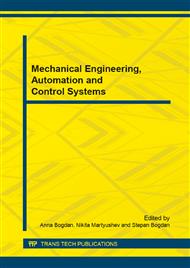[1]
J.B. Pendry, D. Schurig, D.R. Smith, Controlling elecromagnetic fields, Science. 312 (2006) 1780-1782.
DOI: 10.1126/science.1125907
Google Scholar
[2]
H. Chen, B. -I. Wu, B. Zhang, J. A. Kong, Electromagnetic wave interactions with a metamaterial cloak. Phys. Rev. Lett. 99 (2007) 063903.
DOI: 10.1103/physrevlett.99.149901
Google Scholar
[3]
Yu. I. Bobrovnitskii, Scientific principles of acoustic stealth. Doklady Physics. 57 (2012) 18-22.
DOI: 10.1134/s1028335812010028
Google Scholar
[4]
Yu. I. Bobrovnitskii, A nonscattering coating for a cylinder. Acoustical Physics. 54 (2008) 758-768.
Google Scholar
[5]
G.V. Alekseev, Optimization in problems of material-body cloaking using the wave-flow method. Doklady Physics. 58 (2013) 147-151.
DOI: 10.1134/s1028335813040071
Google Scholar
[6]
G.V. Alekseev, Control of boundary impedance in two-dimensional material-body cloaking by the wave flow method. Comput. Math. Math. Phys. 53 (2013) 1853-1869.
DOI: 10.1134/s0965542513120014
Google Scholar
[7]
G.V. Alekseev, Cloaking of material objects by controlling the impedance boundary condition for Maxwell's equations. Doklady Physics. 58 (2013) 482-486.
DOI: 10.1134/s1028335813110025
Google Scholar
[8]
G. V. Alekseev, A. V. Lobanov, Stability estimates for the solutions to inverse extremal problems for the Helmholtz equation. J. Applied and Industrial Mathematics. 7 (2013) 302-312.
DOI: 10.1134/s1990478913030034
Google Scholar
[9]
G.V. Alekseev, V.A. Levin, Optimization method of searching parameters of an inhomogeneous liquid medium in the acoustic cloaking problem. Doklady Physics. 59 (2014) 89-93.
DOI: 10.1134/s1028335814020013
Google Scholar
[10]
G.V. Alekseev, Cloaking via impedance boundary condition for the 2-D Helmholtz equation. Applicable Analysis. 93 (2014) 254-268.
DOI: 10.1080/00036811.2013.768340
Google Scholar
[11]
Ju. Yu. Fershalov, T.V. Sazonov, Experimental research of the nozzles. Advanced Materials Research. 915-916 (2014) 345-348.
DOI: 10.4028/www.scientific.net/amr.915-916.345
Google Scholar
[12]
M. Yu. Fershalov, A. Yu. Fershalov, Ju. Yu. Fershalov, Calculation reactivity degree for axial low-account turbines with small emergence angles of nozzle devices. Advanced Materials Research. 915-916 (2014) 341-344.
DOI: 10.4028/www.scientific.net/amr.915-916.341
Google Scholar
[13]
S.A. Sauter, C. Schwab, Boundary Element Methods, Springer Series in Computational Mathematics, vol. 39, Springer Berlin Heidelberg, (2011).
DOI: 10.1007/978-3-540-68093-2
Google Scholar


